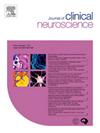Revision LITT for Epilepsy: How likely are patients to get a second treatment if the first fails?
IF 1.9
4区 医学
Q3 CLINICAL NEUROLOGY
引用次数: 0
Abstract
Aims
Medically-refractory epilepsy is a serious neurological problem. Surgical resection may offer the greatest chance of seizure freedom, but is underutilized. Laser interstitial thermal therapy (LITT) has minimal incision size and variable efficacy by pathology. LITT can be repeated to provide seizure freedom, however, the number of patients who receive subsequent LITT treatments after a failed first attempt is unknown. We aimed to review the literature on this potential patient population who might benefit most from multiple surgical treatments.
Methods
We performed a record review of multiple medical databases for studies treating 5 or more epilepsy patients with LITT utilizing the PRISMA guidelines. From the search, we reviewed 55 articles with a total of 1734 patients with at least six months of follow up. We recorded clinical variables, rates of seizure control after LITT, and details of follow up treatments.
Results
Of 1734 total epilepsy patients treated with LITT, 46.4 % were listed as seizure free at last follow up. Out of 850 patients with data on additional procedural treatment, 40.5 % were seizure free and 59.5 % had persistent seizures. Of these, 29.1 % received subsequent intervention for continued seizures. These included additional LITT (55.4 %), surgical resections (41.9 %), and neurostimulator placement (2.0 %). Seizure freedom was achieved in 51.20 % of patients undergoing additional LITT, 62.9 % of patients undergoing subsequent surgical resection, and no patient undergoing neurostimulation. Lesions more likely to achieve seizure freedom with LITT were cavernous malformations (66.7 %) and hypothalamic hamartoma (66.4 %). Lesions less likely to achieve seizure freedom with LITT were temporal lobe epilepsy (43.6 %), focal cortical dysplasia (45.5 %), and periventricular nodular heterotopia (35 %).
Conclusion
Though LITT has respectable efficacy in epilepsy, not all patients may be participating in subsequent procedures after a failed first treatment. Patients should be advised that repeat LITT or subsequent surgical resection may be necessary for best chance of seizure freedom.
癫痫的 LITT 治疗翻版:如果第一次治疗失败,患者接受第二次治疗的可能性有多大?
目的医学难治性癫痫是一种严重的神经系统疾病。手术切除可能提供最大的癫痫发作自由的机会,但没有得到充分利用。激光间质热治疗(LITT)具有切口小、病理疗效不一的特点。可以重复LITT以提供癫痫发作自由,然而,在第一次尝试失败后接受后续LITT治疗的患者数量尚不清楚。我们的目的是回顾这些可能从多种手术治疗中获益最多的潜在患者群体的文献。方法采用PRISMA指南对5例及以上癫痫患者进行LITT治疗的多个医学数据库进行记录回顾。从检索中,我们回顾了55篇文章,共1734例患者,随访时间至少为6个月。我们记录了临床变量、LITT后癫痫发作控制率以及随访治疗的细节。结果经LITT治疗的1734例癫痫患者中,46.4% 的患者在最后随访时无癫痫发作。在850名接受额外程序性治疗的患者中,40.5% %的患者无癫痫发作,59.5% %的患者持续癫痫发作。其中,29.1 %接受了持续癫痫发作的后续干预。这些包括额外的LITT(55.4 %),手术切除(41.9 %)和神经刺激器放置(2.0 %)。51.20% %的患者接受额外的LITT, 62.9 %的患者接受后续手术切除,没有患者接受神经刺激。LITT更容易实现癫痫发作自由的病变是海绵状血管瘤(66.7 %)和下丘脑错构瘤(66.4 %)。LITT不太可能实现癫痫发作自由的病变是颞叶癫痫(43.6 %),局灶性皮质发育不良(45.5 %)和脑室周围结节性异位(35 %)。结论虽然LITT治疗癫痫有良好的疗效,但并非所有患者在首次治疗失败后都可能参加后续治疗。应建议患者重复LITT或随后的手术切除可能是必要的,以获得最佳的癫痫发作自由机会。
本文章由计算机程序翻译,如有差异,请以英文原文为准。
求助全文
约1分钟内获得全文
求助全文
来源期刊

Journal of Clinical Neuroscience
医学-临床神经学
CiteScore
4.50
自引率
0.00%
发文量
402
审稿时长
40 days
期刊介绍:
This International journal, Journal of Clinical Neuroscience, publishes articles on clinical neurosurgery and neurology and the related neurosciences such as neuro-pathology, neuro-radiology, neuro-ophthalmology and neuro-physiology.
The journal has a broad International perspective, and emphasises the advances occurring in Asia, the Pacific Rim region, Europe and North America. The Journal acts as a focus for publication of major clinical and laboratory research, as well as publishing solicited manuscripts on specific subjects from experts, case reports and other information of interest to clinicians working in the clinical neurosciences.
 求助内容:
求助内容: 应助结果提醒方式:
应助结果提醒方式:


